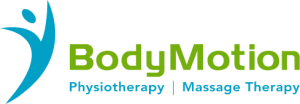Orthopaedic surgeries like hip replacements, knee surgeries, and ACL repairs are life-changing. They help restore function and alleviate pain from some of the most severe injuries or chronic conditions.
Yet, the success of these surgeries doesn’t solely depend on the procedure itself. A huge part of it hinges on the recovery process, and that’s where physiotherapy comes into play. Let’s explore how physiotherapy can assist you in preparing for surgery and aid your recovery afterwards.
The Nature of Orthopaedic Surgery Explained
Orthopaedic surgery focuses on issues related to the musculoskeletal system—our bones, joints, ligaments, and tendons. Common procedures include hip replacements, knee surgeries, and ACL repairs, as these areas receive the most wear and tear, especially among athletes.
In Australia, these surgeries are quite prevalent. In fact, over 100,000 joint replacements are performed annually, highlighting the need for effective recovery strategies to get people back on their feet.
Physiotherapy in Pre-Surgery Preparation
Recovery planning should begin long before surgery. Pre-surgery physiotherapy, often referred to as ‘prehabilitation,’ can significantly improve surgical outcomes and ensure a smoother recovery.
Here’s how:
Strengthening Exercises
Building muscle strength before surgery will help provide extra support for your joints and enhance post-surgery recovery. Strengthening exercises, especially for the quadriceps and hamstrings, for example, are always recommended before knee surgery.
Flexibility and Mobility Training
Think of flexibility and mobility training as oiling the gears – it makes everything move smoothly. Physiotherapists design stretching routines that target specific areas, improving joint range of motion and aiding in faster recovery.
Cardiovascular Fitness
Improving cardiovascular fitness is about building endurance and overall health. Aerobic exercises like cycling or swimming can significantly reduce surgical risks and enhance recovery.
Pain Management Techniques
Pain might be a given, but learning to manage it beforehand can make a world of difference. Physiotherapy includes techniques like deep breathing exercises, relaxation methods, and gentle movements to help manage pre-surgery pain and discomfort.
Education and Expectations
Knowledge is power. Physiotherapists prepare patients mentally and physically for surgery by explaining what to expect during and after the procedure., working to reduce anxiety and ensure patients are more cooperative during recovery.
The Role of a Physiotherapist in Immediate Post-Operative Care
In the immediate post-operative phase, your physio will focus on managing pain, reducing swelling, and beginning gentle movements.
Stages of Recovery After Surgery
Hospital-Based Physiotherapy
Hospital-based physiotherapists guide patients through their initial movements—even the simplest tasks, like getting out of bed and walking short distances. You may think it is too early to start testing your new joint, but there is so much evidence to the contrary. While these early interventions get you on the road to improvement sooner rather than later, they also prevent complications like blood clots and pneumonia, setting the stage for a successful recovery.
Outpatient Rehabilitation and Monitoring
After your hospital stay, your surgeon will likely recommend that you continue with outpatient physiotherapy. This can be done either in an outpatient hospital-based setting or at a private practice. Your outpatient physiotherapist will play a crucial role in your recovery journey, tracking your progress, setting goals, and designing an exercise program tailored to your needs.
In the early stages of recovery after surgery, the goal is to regain mobility, reduce pain, and start weight-bearing exercises.
Physiotherapists employ various treatment methods to help post-operative orthopaedic surgery patients reach their recovery goals. These methods can include soft tissue work, stretching exercises, hydrotherapy, manual therapy, and gym-based exercises. Each of these techniques is aimed at:
- Maintaining flexibility
- Reducing stiffness
- Strengthening muscles without joint movement
- Improving your range of motion
- Gradual transition from aids to independent walking/movement
Intermediate Recovery Phase: Weeks to Months After Surgery
As you move into the intermediate recovery phase, physiotherapy focuses on strengthening and functional recovery. The exercises get more intense to rebuild muscle strength and improve balance.
For example, if you are recovering from hip or knee replacement, some examples of intermediate recovery exercises could include:
- Squats: Strengthens lower body muscles.
- Step-Ups: Enhances balance and coordination.
- Resistance Band Exercises: Increase muscle strength and endurance.
Long-Term Recovery and Maintaining Mobility
As you look to long-term recovery, your approach with your physiotherapist should be all about maintaining the gains you have made after your surgery. Continued physiotherapy ensures you retain your new levels of mobility and function with a refined set of rehabilitation exercises and physical activity.
Examples of Physiotherapy in Orthopaedic Surgery Recovery
Physiotherapy After Hip Replacement Surgery
Recovery from hip replacement surgery can be a tough project due to the significant changes in joint mechanics. Physiotherapy addresses common challenges like stiffness and limited mobility with exercises such as:
- Hip Bridges: Strengthens the hip muscles.
- Leg Raises: Improves lower body strength.
- Ankle Pumps: Enhances circulation and reduce swelling.
Physiotherapy After Knee Surgery
Knee surgeries, including knee replacements and ACL repairs, require specific rehabilitation protocols. Physiotherapists use a combination of exercises and techniques to address challenges like stiffness and weakness, including:
- Heel Slides: Improves knee flexion.
- Quad Sets: Strengthens the quadriceps.
- Straight Leg Raises: Enhances overall leg strength.
ACL Injury Recovery Time After Surgery
ACL injury recovery time after surgery varies, but it generally involves several months of structured physiotherapy. The focus is on gradually increasing the range of motion and strengthening the surrounding muscles.
Explore Tailored Physiotherapy for a Successful Recovery From Orthopaedic Surgeries with BodyMotion
Physiotherapy can dictate your recovery from orthopaedic surgeries, playing an enormous influence on both pre-surgery preparation and post-operative care. If you would like to learn more, contact us today to schedule an appointment or inquire about our services. You can call us directly at 03 9873 3333, send an email to info@bodymotionphysio.com.au, or leave your contact information on our online enquiry form.



